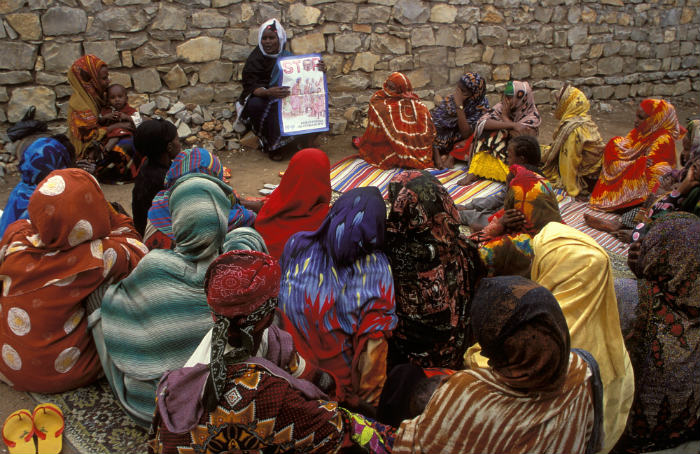By: Rasha Dewedar
Send to a friend
The details you provide on this page will not be used to send unsolicited email, and will not be sold to a 3rd party. See privacy policy.
[CAIRO] Families decide to cut their young daughters’ genitals because of private values rather than social norms, a study says, suggesting that programmes to eradicate the practice may be misguided.
The study, published in Science on 25 September, was carried out in 45 schools in the state of Al Jazirah (Gezira) in southeast Sudan by economists at the University of Zurich in Switzerland with Sudanese colleagues. It challenges the prominent view that female genital cutting is a social norm that evolved as a “coordination game”.
The coordination theory assumes that families use cutting as a community to prepare their daughters for marriage and earn social influence. Therefore, development workers often try to convince families to stop cutting and to declare publicly that they have done so, in the hope that remaining families will also abandon the practice, the paper explains. It adds that this approach is not based on sound evidence.
If this theory were true, communities would have either negligible or near universal cutting rates, with clear differences between ‘cutting’ and ‘noncutting communities’ — but the Al Jazirah data does not match this model.
Instead, the researchers found that cutting rates varied widely between communities. “Apart from a single community with an estimated cutting rate of 100 per cent, cutting rates were neither extremely high nor extremely low,” they say.
Eman Sedeeq, from NGO coalition the Civil Society Alliance, says the results match her own experience in the field in Egypt. “You can easily find diversity in cutting practice between neighbours,” she says.
Families may see cutting as a religious duty, or as a way to provide powerful men “in the mating market” with a sign of sexual fidelity, or they may underestimate the health risks of cutting, the paper says.
To find out if girls had been cut, the researchers used an original method.
Girls in Al Jazirah are typically cut during the summer before entering school, and those who are cut have henna applied to their feet. So the team took pictures of schoolgirls’ feet in the first few days of the pupils starting primary school. The researchers say this method is reliable and does not rely on interviews with parents, who may respond in a certain way to please the interviewer or stay out of trouble.
Doctors also asked girls during routine medical checks if they had been “purified”, the word used locally to describe being cut, the authors say.
But these Sudanese findings may not apply to other places, “given different variables governing the practice in different communities and countries,” says Vivian Fouad from Egypt’s National Population Council, the government body responsible for the fight against female genital mutilation.
Study author Sonja Vogt agrees. “It is entirely possible that the findings would be different elsewhere,” she says. But she adds that another recent paper found similar variation in West Africa.
Charles Efferson, another author of the study, says: “We did not test interventions in this study, so we cannot say that one intervention is more effective than another.” But, the paper adds, “it is surprising given the considerable development funds at stake, no one has provided data clearly showing that female genital cutting exhibits the characteristics of a social norm based on coordination”.
Vogt says empirical research and rigorous evaluations are essential before programmes to eliminate FGM are scaled up.
The UN World Health Organization estimates that more than 125 million girls and women alive today have been cut in the 29 countries in Africa and Middle East where the practice is concentrated.
References
Charles Efferson and others Female genital cutting is not a social coordination norm (Science, 25 September 2015)














